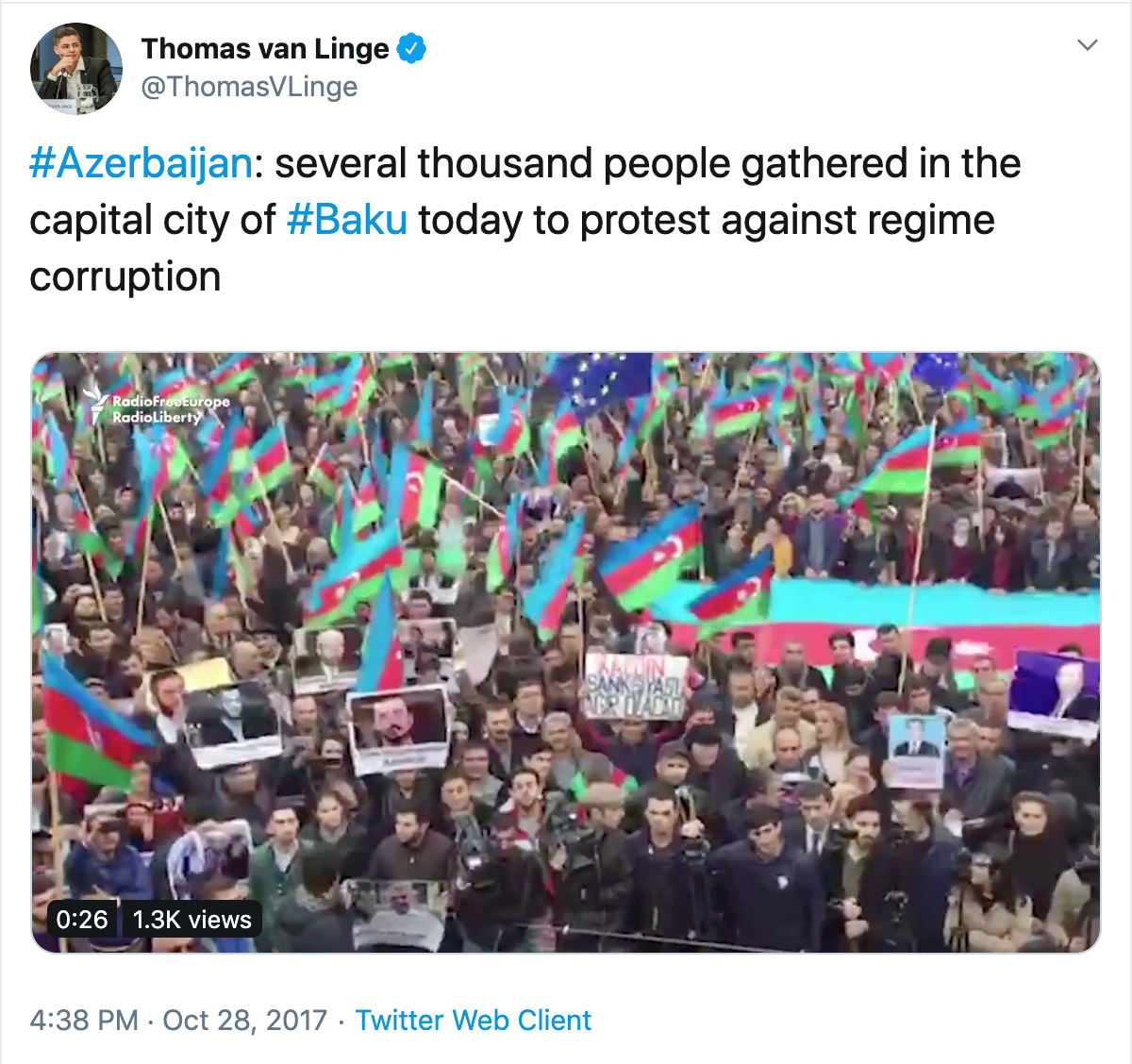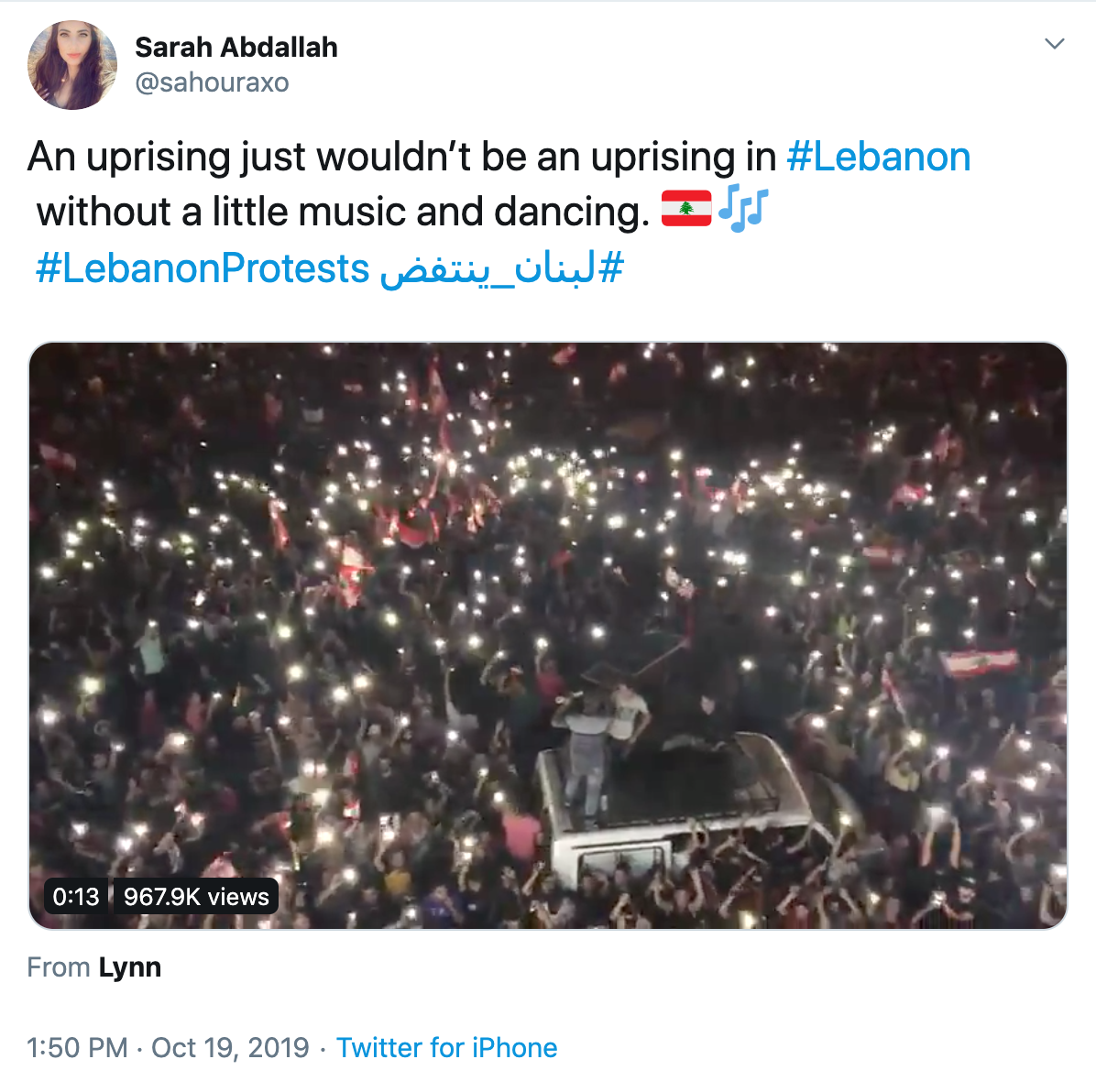
Protestors in Hong Kong gather against emergency anti-mask legislation, passed in response to months of demonstrations. Photo: Etan Liam/Flickr (CC BY-ND 2.0).
States are no longer trusted as representatives of popular interests or reliable guarantors of human rights, even in democracies. In response, civilian protesters have flooded the streets of major global capitals to demand immediate government action.
In Baku, demonstrators rallied for their right to assembly. In Beirut, citizens are calling for an end to government corruption. In Baghdad, protesters demand electoral reform, despite the deadly response of Iraqi security forces. In Santiago, dissent against a four percent increase in metro fares became a rallying cry for larger social reforms. And in Hong Kong, citizens have vowed to make ‘weekday chaos’ the new normal, adapting their tactics after six months of unanswered calls for political autonomy.
Search the trending hashtag #TakeToTheStreets and you’ll find citizen-led anti-Trump and anti-Brexit movements in the United States and the UK. Search the #GiletsJaunes and you’ll find France’s infamous Yellow Vest movement celebrating their protest anniversary one year on.
Government officials should hear the message loud and clear: we are your citizens. “People are increasingly skeptical that states will treat rights as meaningful and uphold them,” says Akwe Amosu, Chief Integration Officer at the Open Society Foundations. “So they are going to the streets to do it for themselves.”
In some cases, the mass protests yielded immediate results. The Lebanese government called off its controversial tax on voice-to-voice WhatsApp messaging, which sparked the nationwide protests, on the first day of disruption. And Chilean officials promptly suspended the proposed hike in metro prices.
But such quick concessions have failed to quiet broader calls for political reform. Instead, the single-issue protest movements have metastasized, gained momentum, and demonstrated staying power in the streets. Social media videos, like clips of Madi Karimeh, Lebanon’s ‘DJ of the Revolution’, or of the 170,000-person human chain linking protesters from Lebanon’s northern capital in Tripoli to its southern capital in Tyre, have helped build a sense of unity and vision among city-level protest movements.
Videos of Chilean police blinding protestors or opening fire have provoked sustained outrage.
“Citizens are again claiming their rights in the streets, but there’s an important difference this year,” says Blavatnik School Professor of Practice of Public Integrity Chris Stone. “Citizen protesters are asking a new question: can we create a notion of rights enforcement that doesn’t depend on states?”
It’s important for human rights organizations to consider this question. For years, the human rights movement has relied on parallel actions by frontline human rights defenders and global advocacy organizations like Human Rights Watch and Amnesty International.
Frontline activists have played a central role in documenting incidents of abuse, convening civil society and amplifying messages across social networks. Groups like Human Rights Watch and Amnesty International then strengthened their campaigns with rigorous investigation and documentation, and provided an important bridge to pliable state leaders and UN representatives.
“Citizen protesters are asking a new question: can we create a notion of rights enforcement that doesn’t depend on states?”
But with a cadre of autocratic leaders like Turkey’s President Recep Tayyip Erdogan, or populist leaders like US President Donald Trump, Russia’s President Vladimir Putin, and Brazil’s President Jair Bolsonaro leading some of the world’s most influential states, Human Rights Watch Executive Director Kenneth Roth suggests a tactical pivot towards nontraditional human rights allies and coalitions of smaller or midsize states.
“We used to look towards Geneva, New York, DC, and Brussels,” confirms a senior researcher at the Egyptian Initiative for Personal Rights (EIPR), “But the allies that we used to take for granted are no longer there.” Without reliable allies at the state level, the fundamental architecture of the human rights movement could be forced to change.
“We need to invest in networks that are more grassroots-oriented,” continues the EIPR research lead, speaking on account of anonymity. “Local networks will help us diversify our allies and introduce us to arenas of mobilization that the Egyptian human rights movement knows nothing about.”
My generation of millennial protestors needs to recognize this opportunity: in the absence of reliable state allies, global rights organizations are ready to partner with us. Of course, groups like Amnesty International and Human Rights Watch have always worked with frontlines activists, but young civilian protesters may have a new opportunity to lead the way.
First, protesters need to invest in relationships that will strengthen their movements and amplify their demands. Next, protesters must look beyond the trending hashtags and the size of the crowds in the street: In a 2017 op-ed, Turkish scholar Zeynep Tufekci, author of Twitter and Tear Gas: The Power and Fragility of Networked Protest, warns that social media networks may make it much easier to pull off a large protest than it used to be, but “the significance of a protest depends on what happens afterwards.”
Protesters gathered in Beirut, Baghdad, Santiago, Port au Prince, Barcelona and Hong Kong must organize their crowds and identify next steps for collective action. With an agenda in hand, international rights organizations can extend their support. And together, we can push for more participatory, safe and inclusive states.
For now, the hashtag #TakeToTheStreets is still trending. We’ll see how far people-power can go.





